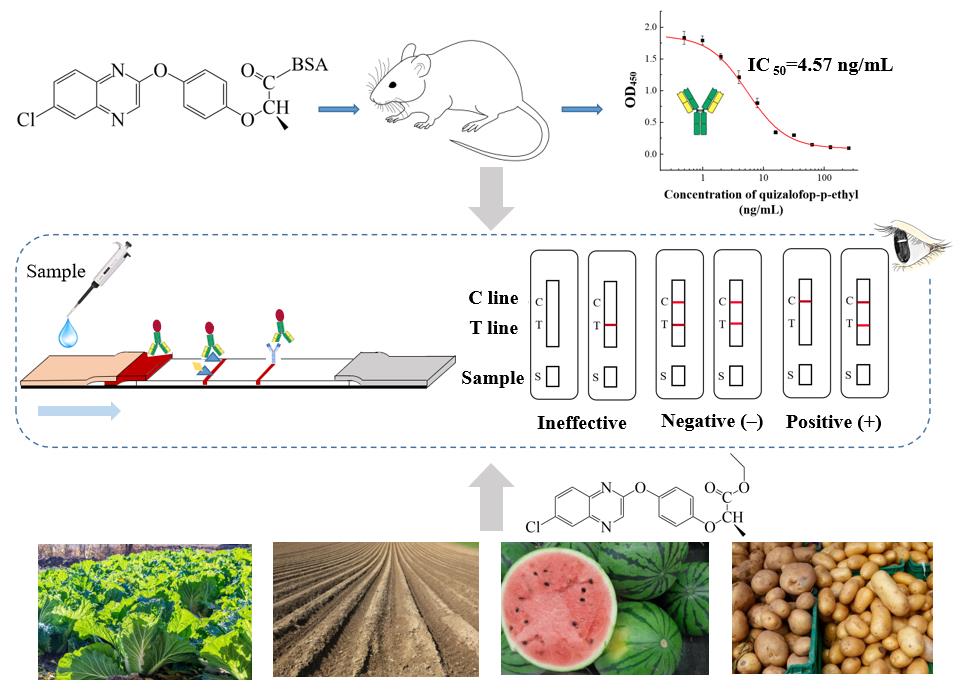
Links
The Tobacco Research Institute has made important progress in the research and product development of rapid detection methods for high-risk herbicides
Recently, the Tobacco Flavor Chemistry Innovation Team of the Tobacco Research Institute of the Chinese Academy of Agricultural Sciences has made progress in the development of rapid detection methods and products for high-risk herbicides. Relevant research results were published in Biosensors-basel (JCR Q1, IF2021=5.743) and Science of the Total Environment (JCR Q1, IF2021=10.753).
Abstract-1
As a common herbicide in farmland, there has been wide concern over quinclorac residue because of its potential risks to the environment and human health. For the detection and monitoring of quinclorac residue in the environment, enzyme-linked immunoassay (ELISA) and time-resolved fluoroimmunoassay (TRFIA) were established. The half-maximal inhibition concentrations (IC50) of ELISA and TRFIA were 0.169 mg/L and 0.087 mg/L with a linear range (IC20–IC80) of 0.020-1.389 mg/L and 0.004-1.861 mg/L, respectively. Compared with ELISA, the limit of detection (LOD, IC20) and IC50 of TRFIA improved approximately 5-fold and 2-fold. The cross-reaction rates for the quinclorac analogs were less than 2%. The average recoveries of quinclorac in river water, paddy water, paddy soil, and brown rice samples were 77.3-106.1%, with RSDs of 1.7-12.5%. More importantly, the results of the two methods were consistent with that of the referenced method of UPLC-MS/MS (R2 > 0.98). ELISA and TRFIA both showed good detection performance and could meet the requirements of the quantitative determination of quinclorac. Therefore, the proposed ELISA and TRFIA could be applied to the rapid and sensitive detection and monitoring of quinclorac residue in the environment
Abstract-2
Quizalofop-p-ethyl is a widely used herbicide that poses a threat to human health and environmental safety. In this study, anti-quizalofop-p-ethyl monoclonal antibodies (mAbs) were prepared and used to develop a gold nanoparticle-based lateral flow immunoassay (AuNP-LFIA) for the detection of quizalofop-p-ethyl in agriproducts and environmental samples. Four hybridoma cell lines were obtained, among which 5B6D10E11 secreted mAb with the highest sensitivity, with a 50% inhibition concentration of 4.57 ng/mL in the indirect competitive enzyme-linked immunosorbent assay. After optimization, the AuNP-LFIA strip based on the mAb (5B6D10E11) showed a visual detection limit of 10 ng/mL, and the results could be directly determined by the naked eye within 8 min. The cross-reactivity of the AuNP-LFIA for analogs of quizalofop-p-ethyl was negligible except for quizalofop-p-acid. The established AuNP-LFIA was proven to be accurate and precise based on the recovery test. Furthermore, the detection results of AuNP-LFIA were consistent with those of ultra-high-performance liquid chromatography tandem mass spectrometry.
